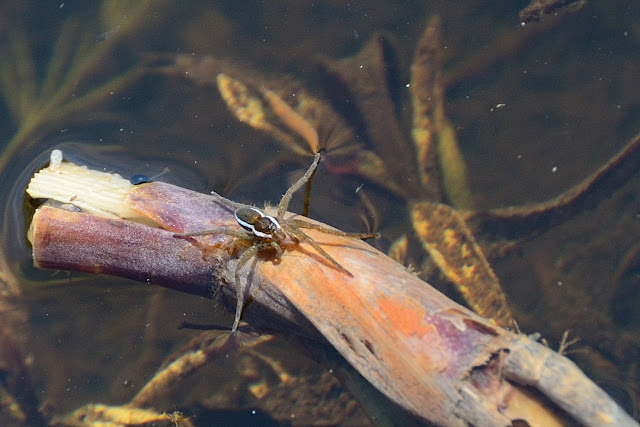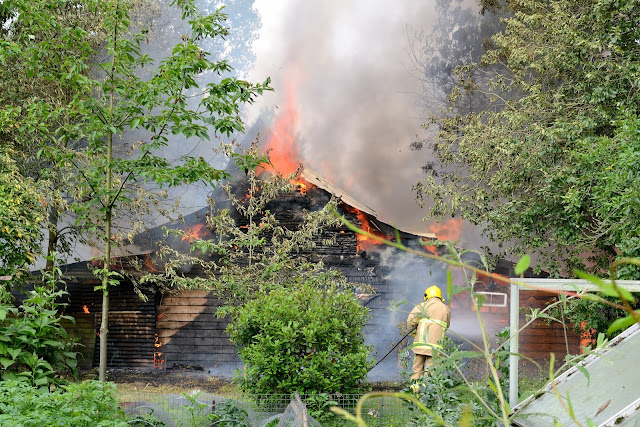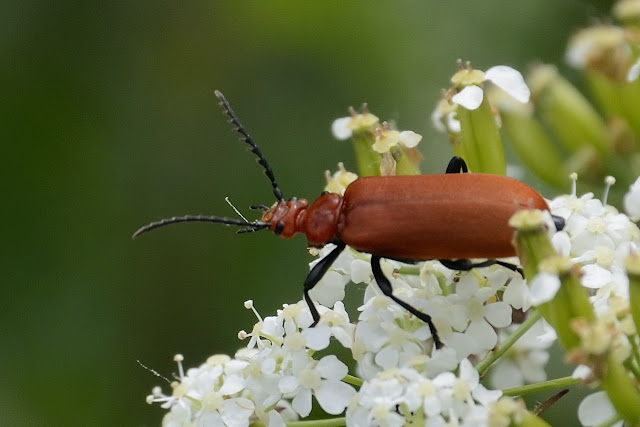Ipswich has several sculptures and works of art, so I learned. So I planned a few hours finding as many as I could and photographing them.
The sculptures represent Ipswich`s maritime, industrial and sporting heritage both through the artwork and the landscape that is walked through.
Although I didn't follow the pre planned routes suggested on the Artethom Map, I had a great time just wandering from one of the sculptures to the other and in fact, managed quite a few today.
The Trawlerman
1992 Sainsburys, Hadleigh Road
John Ravera
Bronze
This sculpture is tucked away out of the town centre at Sainsburys which is close to the river, just before it becomes tidal.
John Ravera was born in Surrey in 1941. He trained at Camberwell School of Art and works mainly in clay for bronze. He is a Past President of the Royal Society of British Sculptors and has public monuments scattered over London and the home counties including the much admired "Family Group" near Battersea Bridge as well as works in Hong Kong and Tokyo.
Against the Tide
2004 Riverside Walk, Bridge Street
Laurence Edwards
This artwork is next to the skate park, by the river, not far from Cardinal Park. It can be seen from the road if you look carefully. It shows a figure struggling with an imagined wave but he is not defeated. The sculpture harnesses the waters power to stay afloat and travel.
The Navigator
2003 River Gipping/Orwell
John Atkin
Cast Iron
John Atkin was commissioned to make this sculpture for Ipswich, alongside the River Orwell, by Ipswich River Action Group. The sculpture was inspired by Ipswich's Maritime history and industrial past. Influences were found amongst a variety of sources, from nineteenth century stern castings for ships,
navigational instruments, to pattern templates and the “wheels” of industry.
This work was constructed in corten steel, a material that is synonymous with the area's past industrial use. It stands, 16ft high, alongside the river, adjacent to a cycle path, watching, guarding, a sentinel to a new era. The Navigator alludes to Ipswich's maritime history as well as a navigator for the future.
Cineworld Bollards
1996 Cineworld, Cardinal Park
Bettina Furnee
These bollards are engraved with lines from films. Bettina Furnee works as a letter cutter and public artist and is based in Cambridge. Her work is site specific and made to commission. She collaborates with communities and has produced text based work for exhibitions. Her public art projects evolve from an interest in the history and future of a particular site.
Sir Bobby Robson Statue
2002 Ipswich Town Football Club
Sean Hedges-Quinn
Bronze
Sir Bobby Robson managed ITFC from 1969 and saw them through the FA cup and UEFA cup, then in 1982 became England boss. He died in 2009 and ITFC renamed their North Stand in his memory. This sculpture was commissioned by the Ipswich Town Supporters' Association and funded by Ipswich Borough Council and TXU.
Sculptor Sean Hedges-Quinn, whose day job is to make animatronics for films, has also made a sculpture of FA Cup-winning Sunderland manager Bob Stokoe at the Stadium of Light. Sean works from his studio just outside Ipswich.
Sir Alf Ramsey Statue
2000 Ipswich Town Football Club
Sean Hedges -Quinn
Bronze
A life size bronze of the former England and Ipswich manager. Sir Alf led ITFC to the league title in 1961-2 and then went on to manage England. He died in 1999. The sculpture was unveiled by Ray Crawford.
Sculptor Sean Hedges-Quinn, whose day job is to make animatronics for films, has also made a sculpture of FA Cup-winning Sunderland manager Bob Stokoe at the Stadium of Light. Sean Hedges Quinn works from his studio just outside Ipswich.
Ship
1971 Civic Centre Roundabout, Civic Drive
Bernard Reynolds
Aluminium, steel and fibreglass
In designing this artwork the sculptor "wanted to create a composition which would have a buoyant character and appear to be riding on the fountain jets, its form to be irregular, to produce changing but balanced profiles from different
view-points and to be an assembly of sail and hull motifs the shapes of which would suggest ships and shipping through the ages - a tribute to Ipswich as a port".
All the parts were moulded and finally assembled by the sculptor himself with the assistance of two of his students. The internal structure of steel tubes and aluminium castings was made by Ipswich firms and the whole sheathed in aluminium/resin reinforced with glass fibre applied and finished by the sculptor.
This sculpture is described by the sculptor as "an arrangement in 3-D of 5 units each based on a shape suggesting sails or hulls. It aims to symbolise ships and shipping of all periods, and therefore Ipswich' s long history as a port. The Ship sculpture won the Sir Otto Beit Medal for Sculpture in 1972.
Sor Of Hing
1963 St Matthew Roundabout
Mervyn Crawford
Aluminium
The installation of this sculpture set-off a flurry of correspondence in the local newspaper. Apparently, its informal nickname derives from one such letter, where the writer referred to it as being the "sort of thing" appropriate to London but not Suffolk. An unfortunate typographic error, on the part of the paper, resulted in the name that many people still know the sculpture by today.
Sor of Hing was commissioned by architects Hare and Pert for their St Matthews Street roundabout development and was cast in Geoffrey Clarkes Hartest foundry.
Crawford was born in 1943. A painter, foundryman and naturalist. While on his National Diploma Course in Painting at Ipswich School of Art, he took a year (1961 - 62) off to help his neighbour Geoffrey Clarke with his work on Coventry Cathedral. Has been a marine foundryman and consultant engineer since then. He has always lived in West Suffolk.
Madonna
1990
Lady Lane
Robert Mellamphy
Bronze
This bronze on the wall in Lady Lane closely resembles the oaken statue which was once in the pilgrim chapel of Our Lady of Grace on this site in medieval times. The original statue is now in a chapel at Nettuo, Italy and Mellaphamy modelled his statue after studying the one in Nettuo.
Robert Mellamphy was born in Cork City, Ireland in 1927. Studied at Crawford College of Art and Technology (1943-46). He then joined the Royal Air Force and travelled worldwide as an aircraft engineer, continuing this occupation since then with civil airlines.
Although he lives in Suffolk, Mellamphy still keeps his connections with Cork and is a member of the National Sculpture Factory.
Tam
1995 Black Horse Lane
Honoria Surie
Bronze
Honoria Surie, the artist who made Tam, was born in Hertfordshire in 1944. She trained at Watford School of Art and is now a painter and potter. The bronze of Tam, the artist's daughter, is Surie's first work in the field of sculpture and is sited on a short plinth on the grass triangle between Black Horse Lane and St Mary Elms Church.
The statue is made of bronze and has a calm and serene feel to it in keeping with its location.
Triptych
2006 St Mary at the Elms
Charles Gurrey
Ancaster hard white limestone
The three modern sculptures are located in the medieval porch of the Ipswich town centre church of St Mary at the Elms, replacing those which would have been in place here up until the 16th century Anglican Reformation.
The sculptures depict Christ as Salvator Mundi, the Saviour of the World. The Blessed Virgin, his mother, is depicted as Stella Maris, Our Lady Star of the Sea, because of the importance of this dedication for the ancient port of Ipswich. St
John the Evangelist holds the gospel inscribed with his symbol, an eagle.
The designs were executed by the York-based sculptor Charles Gurrey, and dedicated in 2006.
Spirit of Youth
1990 St Mary's Court, off Museum Street
John Ravera
Bronze
This work is tucked away in a quiet corner of Ipswich, not far from the town centre.
John Ravera was born in Surrey in 1941. Trained at Camberwell School of Art. Works mainly in clay for bronze. Past President of the Royal Society of British Sculptors. He has public monuments scattered over London and the home counties including the much admired "Family Group" near Battersea
Bridge as well as works in Hong Kong and Tokyo.
Harvest Mural
1962 Cox Lane, Behind Coop Department Store
Artist Unknown
Mosaic Wall Mural
This Mosaic was unveiled in March 1962. It is well hidden as you have to go behind the shop to see it, but it is rather large. Go through the arch to the right of the store and then look behind you and up!
There are images in it from the emblems of the cooperative movement, such as a wheat sheaf.
Cranes Tableau
1977 Upper Orwell Street
John A Green
Bronze
John A Green was born in Ipswich in 1932, son of a Master Mason. John gained his Master Mason Certificate in 1951. He studied at Ipswich School of Art (1951-54) and the Royal College of Art (1954-57) where he was encouraged by Prof. John Skeaping. From 1957 until 1959 John was assistant to Jacob Epstein.
His main run of work is the restoration of church monuments. His work in Ipswich is this bronze panel on a brick plinth in Upper Orwell Street, symbolising the technical development in foundry methods during the fifty years since the firm Cranes came to Ipswich.
There are several more of these works of art dotted around Ipswich and I will probably return in a few days to find a few more.

























































